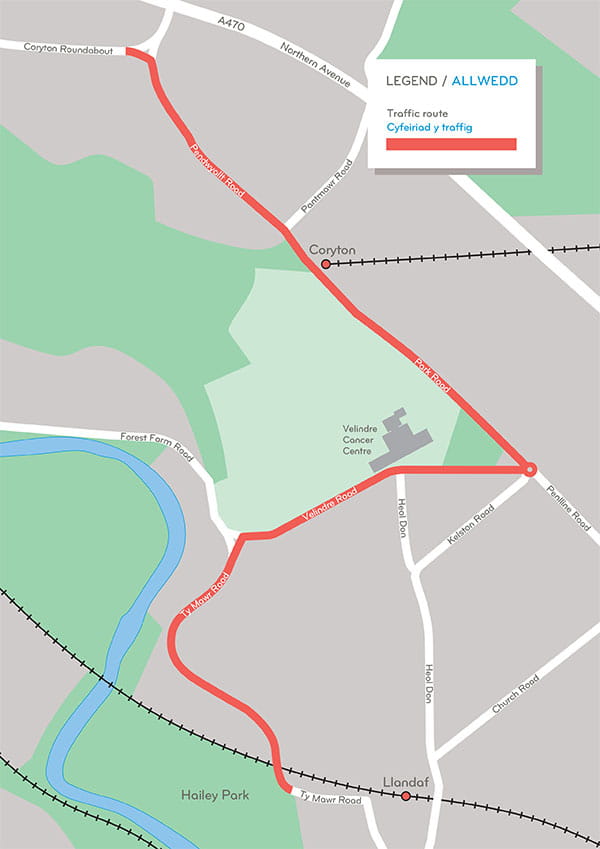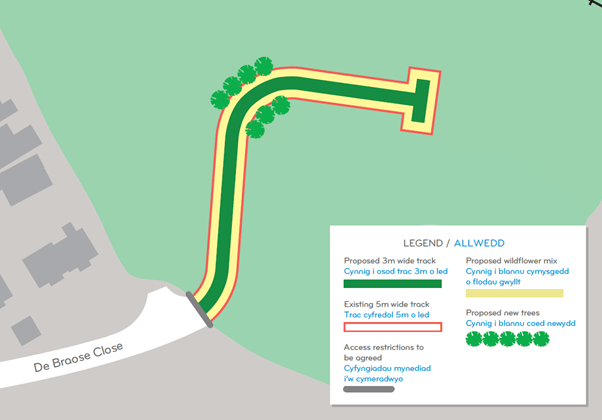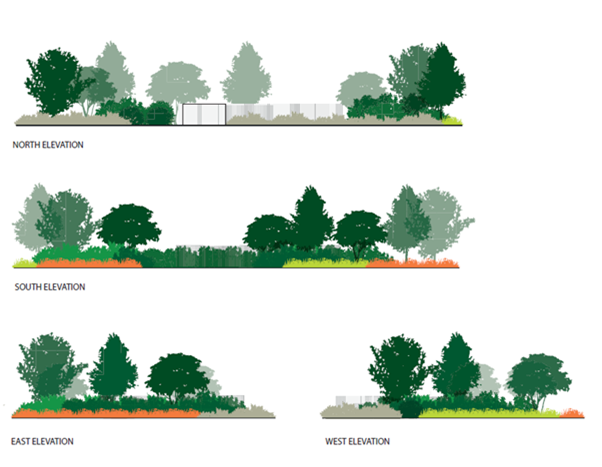Frequently asked questions
Want to know more? Click below to check out our FAQs.
An ingress of water event occurred at the base of the shaft at Hailey Park, causing significant damage to the tunnel boring machine (TBM) that had begun work on the new sewer pipeline between De Braose Close (Danescourt) and Hailey Park.
Following a thorough investigation with our tunnelling contractor, it has been confirmed that the damage sustained to the TBM cannot be repaired in its current location. As such, the machine will need to be removed from the tunnel and shaft for off-site repairs.
Regrettably, this means that construction of the new sewer pipeline between Hailey Park and De Braose Close will be paused until this issue is resolved. We currently anticipate that work will resume in January 2026. Our team will remain on site to manage the removal of the TBM, and as such you will continue to see our team working to help resolve the issue as safely and efficiently as possible.
We sincerely apologise for the inconvenience this may cause to the local community and appreciate your patience and understanding during this time. We will continue to review the project timeline and provide further updates as soon as more information becomes available from our tunnelling contractor.
We’re carrying out this work on behalf of the Plasdŵr housing development, which will help manage the increased sewerage flow that we are expecting as the development progresses. We’re working closely with the local authority and the developer to ensure the Cardiff sewerage network has the capacity to be able to deal with these increased flows, and thus reduce the risk of network failure for the wider community.
Our work involves connecting the sewer pipe that runs from Danescourt to a connection point located the other side of the River Taff.
Working closely with our designers and the local authority, it has been agreed that the best solution to manage the additional flows would be to build a pumping station within Hailey Park which the sewer pipe will connect to. Planning for this pumping station was submitted in October 2021 and was granted in September 2022.
As part of our work, we’ve been working closely with the local authority and the developer to ensure the Cardiff sewerage network has the capacity to be able to deal with these increased flows that we are expecting as the development progresses, and thus reduce the risk of network failure for the wider community. We have identified that the sewerage network in Llandaff North has sufficient capacity for us to transfer some of the flows into this network which will then be taken to Cardiff Wastewater Treatment Works to be treated.
As part of this process we have been working hard to ensure we identify the best solution to accommodate the site, without causing any detriment to the local environment or the service we provide to customers in the area.
All other flows will be fed into the network and carried to Cog Moors Wastewater Treatment Works in Dinas Powys.
The work is being funded by the Plasdŵr housing developers.
Following the result of the Judicial Review, the relevant permissions obtained following planning being granted in September 2022 remain in place. Our chosen option has been properly assessed as the most appropriate solution and due to time constraints and our legal obligation to deliver the scheme we will not be considering other options.
For the Plasdŵr development, the surface water removal will need to be undertaken in advance of the discharge of any foul flows from the development site over and above what has previously been agreed to discharge into the immediate public sewer in the vicinity of the site. The housing developer is funding these works which typically involve the redirection of surface water or highway drainage flows which currently enter the public combined sewerage system, into alternative outlets such as dedicated surface water systems, watercourses and culverts.
We have been developing a range of potential surface water removal schemes within the catchment to offset the new foul flows being generated from the development site. A number of those schemes are currently being assessed to prove their viability and selection and we’ll share more information at the appropriate time when we have more certainty about which schemes we will progress. These schemes will improve environmental outcomes and will not give rise to any environmental effects.
You can get in touch by calling 0800 085 3968 and asking to speak with our community team. Our call centre will then arrange for a member of our community team to give you a call back.
You can also submit your questions to us via email at community@dwrcymru.com.
De Braose Close, Danescourt
We have looked at various solutions to be able to manage the additional sewerage flows from the Plasdŵr development. We have looked at various solutions to be able to manage the additional sewerage flows from the Plasdŵr development. Where possible, some of the new properties will be connecting into our nearby existing sewers where there is sufficient capacity. Where this is not feasible, the only viable option is to pass flows into one of our existing trunk sewers which carries flows to Cardiff Wastewater Treatment Works. To achieve this, we need to be able to cross the Cardiff to Radyr railway line and the River Taff, and we are working closely with both Transport for Wales and Natural Resources Wales in respect of this. The only workable location to do this with the Civil Engineering techniques that are going to be required has been identified within the area behind De Braose Close.
Following our work, we will need a permanent access to our assets in case of an operational incident. To do this, we are proposing to reduce the size of the existing track from five metres wide to three metres wide, as well as enhancing the area with additional trees and wildflower. Our proposal for this is outlined on the plan below and will go through the necessary permission process before being approved.
No, there will be no overflow into the River Taff as a result of this work.
Our work behind De Braose Close will be carried out next to the river Taff and railway line.
Please note that there will be a gap in the work at De Braose Close, with final completion expected around August 2025. This delay is due to the higher-than-expected groundwater flow levels at Hailey Park, which have impacted the overall timeline.
Hailey Park
Following the result of the Judicial Review, the relevant permissions obtained following planning being granted in September 2022 remain in place.
Where possible, some of the new properties will be connecting into our nearby existing sewers where there is sufficient capacity. Where this is not feasible, the only viable option is to pass flows into one of our existing trunk sewers which carries flows to Cardiff Wastewater Treatment Works.
Normally, our network relies on gravity for waste to flow from your homes and businesses to our sewers. However, in low-lying areas – like Hailey Park – we need to pump the wastewater up into the network. To do this, we need to build a new pumping station which will pump the sewerage up to the existing sewerage network which will then travel to Cardiff Wastewater Treatment Works.
The location of the pumping station has been made based on the location of our sewer pipes and the availability of suitable land.
Normally, our network relies on gravity for waste to flow from your homes and businesses to our sewers. However, in low-lying areas – like Hailey Park – we need to pump the wastewater up into the network. To do this, we need to build a pumping station which will pump the sewage up to the existing sewerage network which will then travel to Cardiff Wastewater Treatment Works.
In line with Natural Resources Wales’s policy guidance regarding new treatment works and subsequent associated river discharge, the option to build a new treatment works at the Plasdŵr development was discounted. This is because a new wastewater treatment works would need a permit to discharge into the water course. Making the most of existing capacity would be the preferred option rather than the construction a new treatment works which would involve a new discharge into the environment.
The pumping station site will be 24 metres by 21 metres. The pumps themselves will be 20 metres below ground, with a concrete cover at ground level.
There will be a kiosk which will be 3 metres high, and the fencing around the site will be 2.4 metres high. The fencing is green and has been designed to try and blend in with the landscaping around the site. It has also been chosen with security of our assets in mind. However, we are open to looking at alternative solutions to doing all we can to ensure the site blends in with its surroundings.
In line with legislation, we were not required to submit planning application for the assets below ground.
The pumping station has been designed as small as possible whilst allowing our operational team to access the assets for maintenance purposes, creating a safe environment for park users.
The pumping station has been designed to national standards which aim to eliminate noise and odours. Our pumps will be located 20 metres below ground with a closed, concrete shaft. The only above ground asset that could generate some noise is the emergency power generator, which would only be used during a local power outage.
We have three kiosks proposed for the site; one to control the pumps, the second containing a potable water supply and a third which will contain an emergency generator which will keep the pumping station in operation should we experience a power outage.
The plastic material chosen for the kiosks is needed to meet design, construction and security requirements set out by legislation.
As part of our planning application, we have undertaken an Ecological Impact Assessment. This assessment includes multiple mitigation proposals and concludes that it is unlikely the proposed development will have negative impacts to the ecological receptors on site and in the local area.
It is considered that the biodiversity of the site will be maintained at a level that will retain the ecosystem’s function. There is no net loss to the vegetation within the site due to the replanting of native shrub species. The diversity and condition of the retained and created vegetation and grassland habitats within the site will be slightly increased through native species-rich planting and secured through long-term habitat management and monitoring.
As part of our landscape design, we are planning to reinstate the area using the following:
- Existing grass with ecologically enhanced meadow
- Native shrub mixes
- Wildflower meadow
- Trees
For full details please click here.
Access to the pumping station location will be via the existing access track (to the changing rooms) off Ty Mawr Road. All construction traffic will be coming through Whitchurch, via Velindre Road and Ty Mawr Road.
We will be constructing the access within the pumping station site using a grid structure that allows drainage and grass to grow through cells – this will help minimise the amount of concrete needed.
The route our construction traffic will be taking will be through Whitchurch and via Velindre Road and Ty Mawr Road - this is shown on the map below.

To ensure the route is clear, we will be carrying out some work to cut back any trees or vegetation that are overhanging onto the road.
Access to the pumping station will be via the existing access track to the changing rooms off Ty Mawr Road. During construction, there will be more traffic than usual travelling in the area. However, this will be mostly at the start and the end of the project when we are setting up and demobilising our compound. When construction work is underway, vehicles will be less frequent. There will not be hundreds of deliveries made each day.
Once completed, we do not envisage the current access track security arrangements needing to be changed. Welsh Water maintenance vehicles will occasionally visit the site, but this will not be on a regular basis.
Yes, throughout the planning and design stages we have been working closely with Arup and their ecology resources.
As part of our work, we will need to remove some vegetation and trees to create a safe working environment. We are currently planning to do this in February 2023 and we are working with an ecologist and Cardiff Council to do this.
We have developed a comprehensive replanting programme which has an opportunity to boost the value of the local environment. This will be carried out once the work has been completed. For full details please click here.
Where possible, all retained and created habitats on site will be enhanced for local biodiversity. This will include the installation of five bird boxes and five bat boxes to the north of the site, and the installation of an insect house and hedgehog house with the site adjacent to the scrub areas.
We will do all we can to ensure that public access routes remain open while we carry out our work – this includes access to facilities such as the changing rooms off Ty Mawr Road. However, for the safety of the general public there may be some diversions in place while we work. What this will look like will be communicated closer to the time when we are ready to start building the pumping station.
Flooding impacts have been considered and have been factored into our choice of materials to reduce the risk of any flooding within the park as a result of our work. You can read more in section “5.6 Flooding Impacts “ in the planning application letter that is available on the planning portal
Over the last few years, our operations team have attended the area following reports of flooding. However, after investigation we have determined that local surface water flooding issues have been a result of blocked drains or gulleys that are maintained by the local authority.
The local authority is responsible for all blockages on properties they manage, highway drains and gulleys. The council have more information about this on their website, along with information of how you can report it to them.
To say thank you to the community, we will be launching a £10,000 community fund in January 2023. The grant will be available to local community groups or organisations as a way of thanking them for bearing with us while we carry out our work. More information can be found here on the main page.
We have been working closely with all the necessary stakeholders to ensure the park remains a safe place for people to enjoy while we carry out our work. Once built, the new pumping station will not result in any reduction to existing rugby pitch provision. During construction work however, one pitch will be impacted. All relevant parties are aware of this and alternative arrangements have been agreed.
We are not implementing any rules regarding dogs on leads as part of our work, but we do kindly ask that dog walkers take extra care when walking past our working area and follow the current laws that protect public rights of way.
CCTV surveillance is in place for the recording and monitoring in the area for the purposes of the prevention, reduction and detection of crime, the safety of its personnel and third parties and monitoring for interference with its rights to undertake works in the area. Further recording may take place using body worn video, handheld cameras or similar in the event that individuals are placing themselves or others at risk or interfering with rights to undertake work. Recorded footage may be shared with the Police or used for the purpose of legal proceedings.
Large construction vehicles (i.e. HGVs) will be travelling via Park Road and Velindre Road as this is the only suitable route that is wide enough to allow these vehicles to reach our site. However, we are mindful that there is other construction work taking place in Whitchurch and will provide some flexibility for smaller vehicles – such as vans – to travel to site from the Llandaff North direction to reduce the impact on traffic coming through Whitchurch. Where possible, we’ll do our best to avoid peak travel times.
Those areas reinstated within our planning boundary will be maintained in conjunction with Cardiff Council as the landowner.



